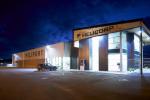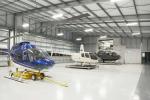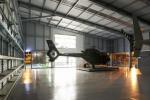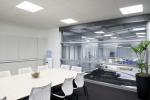Hamilton Heliport
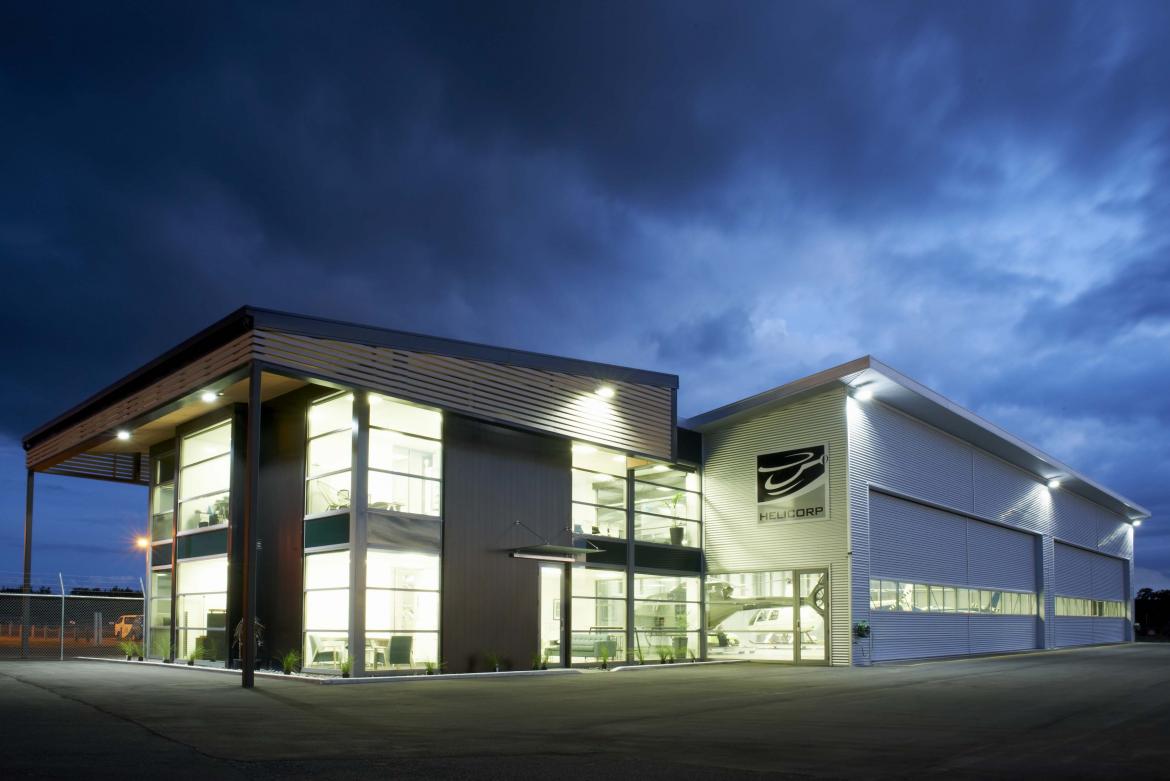
When HeliCorp owner Brent Glover decided he wanted to take his business to the next level, new premises had to be part of the equation.
For about 15 years, HeliCorp had been providing a wide range of helicopter flight services including scenic charter flights, corporate aviation services and transfers, as well as aerial photography/filming, surveying, lifting and frost protection.
But operating out of an old yellow hangar on the far side of the airfield at Hamilton Airport was not going to impress corporate clients or more affluent customers who wanted to use its services to access exclusive lodges or beautiful spots around the country for pursuits such as fishing or golf.
So the company commissioned Daniel Cullen, of Cullen Keiser Architecture, to create a multipurpose building of about 1000sqm floor area that would be big enough to house its four helicopters, with adjoining space for offices, a meeting room and passenger lounge.
Situated adjacent to the Hamilton airport terminal building, Hamilton Heliport would also provide a base for flight training operation Helitrain NZ.
Daniel Cullen says huge open spaces were required to house the helicopters.
“The hangars were split into 20m x 18m clear span bays, which stored two helicopters per bay. This required a clear span bi-fold hanger door of 18m wide and minimum 4.5m height. A hangar corner has been glazed to give all visitors to the airport a closer look at these magnificent machines. HeliCorp’s fleet includes a Eurocopter EC 120, Bell Jetranger, Robinson R44 and a Eurocopter EC 130.”
Essential to the design of the building was Coresteel’s Bracketless Portal System.
Joint director of Coresteel Waikato, Gary White, says, “With no supporting brackets or braces, the Bracketless Portal System is ideal for hangars, as it allows for the best utilisation of the floor and ceiling space – a vital element when storing aircraft.”
During the Heliport project Coresteel managed the process from start to finish with their in-house design, engineering, manufacturing and construction teams.
Gary says, “Daniel Cullen also worked with us during the design process quite intensely so we could work out what things would cost, and the design did change a little bit during that process.”
Daniel says a key part of his design was grounding the buildings in the day-to-day business going on in and around them, while making sure the spaces could operate independently.
“The office brief was to have a visual link to the building entry, air strip and hangars linking the environment into the work place. This was achieved by the full height glass in to the hangars and to the airstrip. The offices are of high quality and seem like a separate building from the hangars.”
This seeming separation was created by cladding the hangars, which feature some exposed concrete tilt slab walls, in Zincalume Corrugate, while the two-storey office block is clad in Styleline and Nu-Wall Mono for a clean, modern look.
Daniel says, “The materials were used to link the surrounding area and to create a contemporary look. The hangars were clad in horizontal corrugated Zincalume and exposed aggregate tilt panels with glazing on one corner for views into the hanger. Translucent roofing to the hangar bays and glass to the hanger doors provided natural lighting into the hangars.
He adds, “The training facility upstairs has a visual link to the air strip and the hangars below. The space is also available for hire and general team meetings. There is a specific separate entry for training seminars so surrounding businesses are not disrupted.”
“The waiting lounge downstairs accommodates passengers awaiting flights or who have just arrived. The lounge has projecting views down the hanger and out into the air field. The visitor bathroom is catered for visitors before or after flights. The lounge also plans to be used for the occasional national and international flights from alternative airlines which require a facility to process customs for a more private terminal.”
A feature of the building is the cedar slats around the top. Daniel says, “Cedar battens were used for sun protection to the north and setting sun to the west and provided a break in materials and colour.”
Polished concrete floors gave a natural look through the main entry and lounge, with carpet to the offices. The visitor bathroom is tiled floor and walls with high quality fittings.
Daniel says that at the time of the build the air strip was being re-sealed, so some of the asphalt removed from the strip was re-used and compacted as hard fill for the helicopter apron.
And to future proof the building for future expansion, the building consent was lodged with an extra two hangers.

